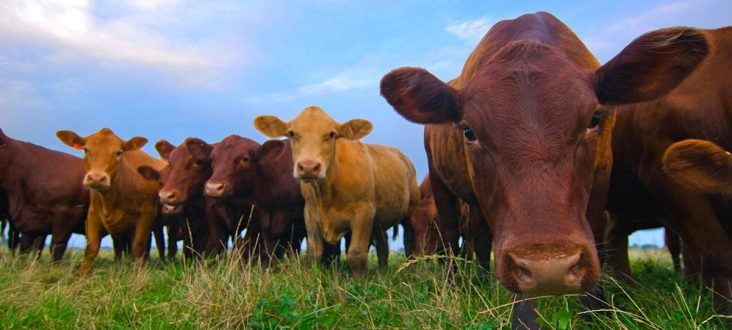Cattle market collapses as production falls
by April 29, 2020 2:28 pm 1,088 views

Following a monumental, but brief surge in cattle production in March, the market in April is set for one of the worst production months in decades.
The number of federally inspected slaughtered cattle for the week ending on April 24 was 469,000, a 25% (173,000) drop from the same week in 2019, according to an economic impact report released by the University of Arkansas Division of Agriculture. The number of ready-to-process cattle will spike, and prices will drop, agri-economist John Anderson said.
Negotiated cash cattle prices have fallen below $100 hundredweight for the first time since fall of 2016, and the only way to bring the markets back into alignment will be for processing plants to get back to normal operations, he added.
The impacts will likely be two-fold. Fewer beef products will make it to grocery stores and restaurants which will make consumer prices go up. The number of cattle that can be slaughtered will grow, causing payouts to ranchers and farmers to go down, Anderson said.
Part of the problem started in March with the panic buying in the response to the COVID-19 pandemic.
Panic buying prompted a sharp rise in fed cattle marketing, but feedlot placements have slowed in parallel to meat processing, according to the report. In March, fed cattle marketing was “13% higher than the prior year,” he said. “This was the second-highest marketing figure for March since this Cattle on Feed series began in 1996.”
Anderson said the quick pace of marketing noted in the report “confirms the fact that meat packers in March were operating at a very high capacity in an effort to match the surge in demand caused by panic buying.”
While the number of cattle marketed from feedlots increased, the number of cattle being placed into feedlots for finishing fell sharply. As a result, the number of cattle in feedlots as of April 1 dropped slightly more than 5% from the prior year.
The decline in feedlot inventories is strongly counter-seasonal,” he said. “Typically, on-feed inventories rise from March to April as feeder cattle come out of winter grazing.”
Anderson said he expects the number of cattle being marketed will be much lower as a result of plant closings and slowdowns in response to COVID-19.
Beef is typically the fifth largest ag sector in Arkansas. It’s a nearly $1 billion industry in the state serviced by about 24,000 farms. Roughly, 5.6 million acres is utilized in the industry, according to the Arkansas Farm Bureau.
